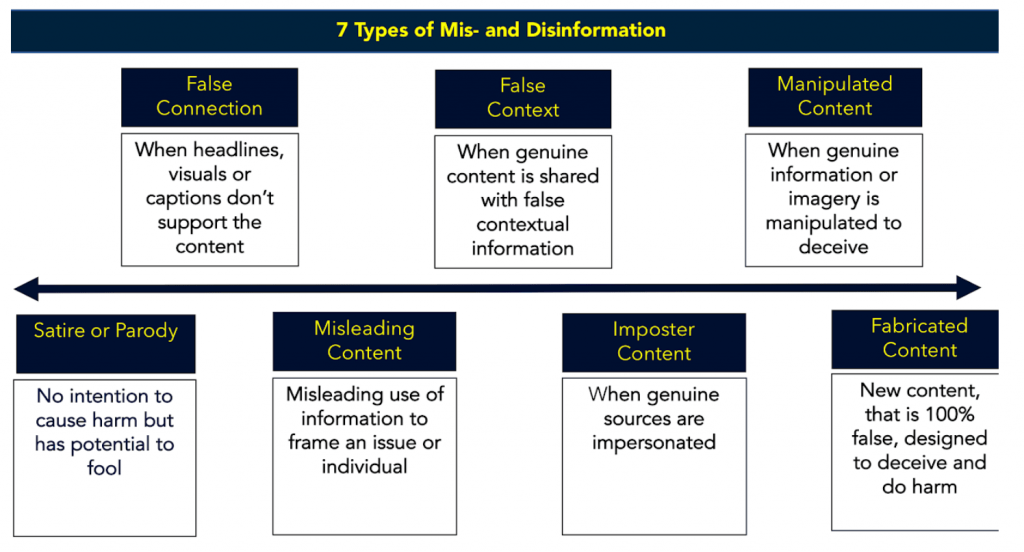Our society is constantly interacting with digital tools, whether through social media or through digital tools, such as Google, so it is important that we improve our digital literacy as a whole to be able to understand what we are seeing online and also communicate effectively. By teaching our students to become digitally literate we are raising the next generation to be prepared to function in a digital world. If we are not digitally literate, we can fall prey to “fake news,” which is often harder to distinguish from the truth than we think.
In Social Studies and English, students will often spend a lot of time doing research for their own projects. One resource I looked into was SweetSearch, which is made for students! All of the resources on the site are already proven to be legitimate and not “fake.” Similar to what university students have with our library search engine, where we can see if an article is peer-reviewed.
An important thing to teach students is the 7 types of mis- and dis-information that are shown in this resource. It might even be something you could have as a poster in the classroom as a reminder! The reason it has become harder to discern between what is “real” and what is “fake” online is because often times it is not something ridiculous that is being presented as fact.

One article I read talks about the difference between fake news in the past and today’s world. Today, it is extremely difficult to discern between what is real and what is fake because fake news is everywhere, not just in tabloids. Tabloids were meant mostly for entertainment, but fake news today is used for more cunning reasons. The article also states that it’s no longer enough to know how to check the date on an article or find the name of the author, but we need to be digitally literate in order to make sense of what we are seeing. One example the article gives is understanding the implicit biases of various news sites in order to make sense of the information we are being given from them. These are skills that must be taught to our students!
The NCTE states in its Definition of Literacy in a Digital Age that “active, successful participants in a global society must be able to:
- Participate effectively and critically in a networked world
- Explore and engage critically, thoughtfully, and across a wide variety of inclusive texts and tools/modalities
- Consume, curate, and create actively across context
- Advocate for equitable access to and accessibility of texts, tools, and information
- Build and sustain intentional global and cross-cultural connections and relationships with others so as to pose and solve problems collaboratively and strengthen independent thought
- Promote culturally sustaining communication and recognize the bias and privilege present in the interactions
- Examine the rights, responsibilities, and ethical implications of the use and creation of information
- Determine how and to what extent texts and tools amplify one’s own and others’ narratives as well as counter unproductive narratives
- Recognize and honor the multilingual literacy identities and culture experiences individuals bring to learning environments and provide opportunities to promote, amplify, and encourage these differing variations of language (e.g., dialect, jargon, register).”
These goals of the NCTE framework could be incorporated into the Social Studies and English classrooms because both subject areas are focused on creating “good” citizens. Social Studies looks at history to learn from it and also discusses how we can improve our society. English looks at relationships between people and our roles in society. Our rights and responsibilities as a part of society include our digital identities, so it is important that students are digitally literate.